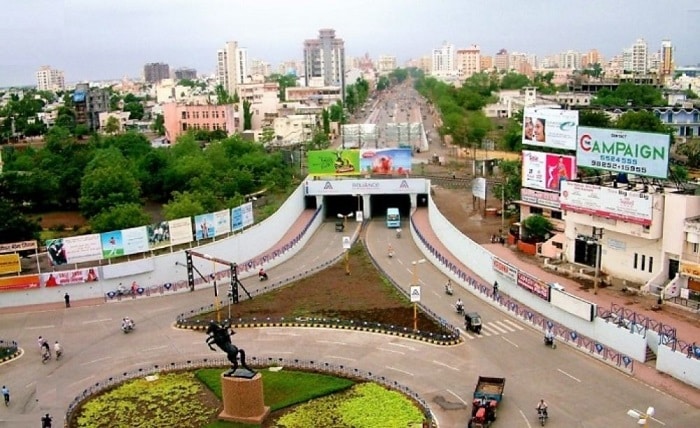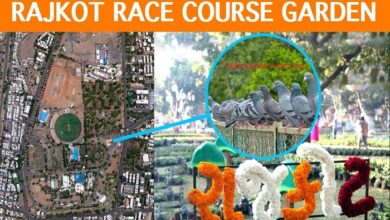Rajkot: A Comprehensive Guide to the Heart of Saurashtra

Introduction
Rajkot, located in the heart of Saurashtra in Gujarat, India, is a city rich in history, culture, and tradition. Known for its rapid development and vibrant lifestyle, Rajkot is a significant economic and cultural hub. This comprehensive guide will take you through the various aspects of Rajkot, from its historical significance to its modern-day attractions.
The Historical Significance of Rajkot
Rajkot has a rich historical background that dates back to the 17th century. Founded by Thakur Saheb Vibhaji Ajoji Jadeja, Rajkot served as a key city during the British Raj and played a pivotal role in India’s freedom movement. Understanding the historical significance of Rajkot gives insight into its development and cultural heritage.
The Cultural Heritage of Rajkot
The cultural heritage of Rajkot is a blend of traditional Gujarati culture and modern influences. Festivals such as Navratri, Diwali, and Janmashtami are celebrated with great enthusiasm. The city is also known for its traditional arts and crafts, including Bandhani (tie-dye) and Patola silk weaving, which are integral to Rajkot’s cultural identity.
Major Attractions in Rajkot
Rajkot boasts several attractions that draw visitors from around the world. The Watson Museum, showcasing artifacts from the colonial period, and the Rotary Dolls Museum, featuring dolls from various countries, are must-visit places. The historic Kaba Gandhi No Delo, the ancestral home of Mahatma Gandhi, offers a glimpse into the early life of the Father of the Nation.
Rajkot’s Role in India’s Freedom Movement
Rajkot played a crucial role in India’s struggle for independence. It was here that Mahatma Gandhi spent his early years and imbibed the values that would later drive the freedom movement. The city’s connection to Gandhi and other freedom fighters makes it a significant place in India’s history.
Economic Development in Rajkot
Rajkot has seen remarkable economic growth over the past few decades. It is known for its robust industrial sector, including automobile manufacturing, foundries, and machine tools. The city’s economic development has also been driven by its thriving small and medium enterprises (SMEs).
Educational Institutions in Rajkot
Rajkot is home to several renowned educational institutions. Saurashtra University, Marwadi University, and Rajkot Medical College are among the prominent institutions that attract students from across India. The city’s focus on education has made it a center for academic excellence in the region.
Culinary Delights of Rajkot
The culinary scene in Rajkot is a delightful mix of traditional Gujarati cuisine and contemporary flavors. From the famous Gujarati thali to street foods like dabeli and ghughra, the city offers a gastronomic adventure for food lovers. The local sweets, such as peda and jalebi, are also a must-try.
Shopping in Rajkot
Shopping in Rajkot is an exciting experience, with bustling markets and modern malls offering a variety of goods. Traditional bazaars like Dharmendra Road and Bangdi Bazaar are perfect for purchasing local handicrafts and textiles. The city’s shopping scene reflects its cultural diversity and modernity.
Festivals and Events in Rajkot
Rajkot is known for its vibrant festivals and events that showcase the city’s rich cultural tapestry. Navratri, with its energetic Garba dances, is one of the most popular festivals. The city also hosts various cultural and trade fairs, including the Rajkot Marathon and the RMC Trade Fair, attracting visitors from all over.
The Natural Beauty of Rajkot
Beyond its urban attractions, Rajkot is surrounded by natural beauty. Aji Dam and Nyari Dam are popular spots for picnics and nature walks. The Pradyuman Park and Jubilee Garden offer green spaces within the city, providing a peaceful retreat from the hustle and bustle.
Transportation in Rajkot
Rajkot is well-connected by air, rail, and road, making it accessible from major cities in India. The Rajkot Airport offers regular flights to Mumbai, Delhi, and other key destinations. The city’s railway station and bus services ensure smooth connectivity within and outside Gujarat.
Future Prospects of Rajkot
The future of Rajkot looks promising, with ongoing infrastructure projects and plans for smart city development. The city’s focus on sustainable growth and innovation promises to enhance the quality of life for its residents and make Rajkot an even more attractive destination for tourists and investors.
Conclusion
Rajkot, with its rich history, vibrant culture, and dynamic economy, stands as a testament to the growth and development of Gujarat. From its historical landmarks to modern amenities, the city offers something for everyone. Whether you are a history buff, a cultural enthusiast, or a business traveler, Rajkot welcomes you with open arms.
FAQs
1. What is the historical significance of Rajkot?
Rajkot has a rich history dating back to the 17th century and played a pivotal role in India’s freedom movement, with strong ties to Mahatma Gandhi.
2. What are the major attractions in Rajkot?
Major attractions in Rajkot include the Watson Museum, Rotary Dolls Museum, Kaba Gandhi No Delo, Aji Dam, and Jubilee Garden.
3. How is Rajkot connected to the rest of India?
Rajkot is well-connected by air through Rajkot Airport, by rail through its railway station, and by road with extensive bus services to major cities.
4. What educational institutions are prominent in Rajkot?
Rajkot is home to renowned institutions like Saurashtra University, Marwadi University, and Rajkot Medical College.
5. What are the popular festivals in Rajkot?
Popular festivals in Rajkot include Navratri, Diwali, Janmashtami, and various cultural and trade events such as the Rajkot Marathon and RMC Trade Fair.





